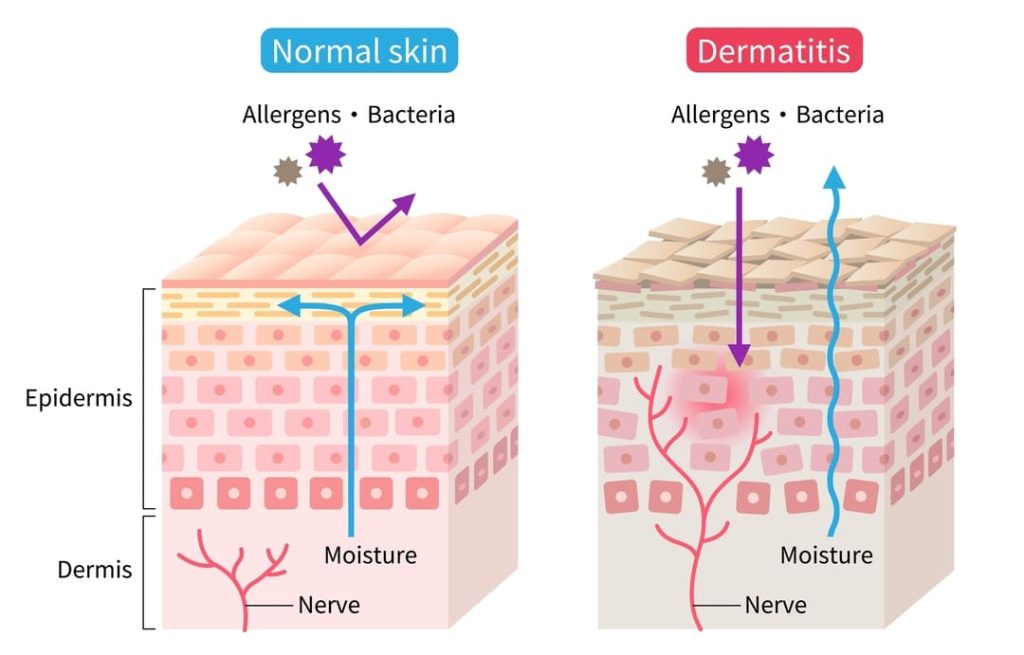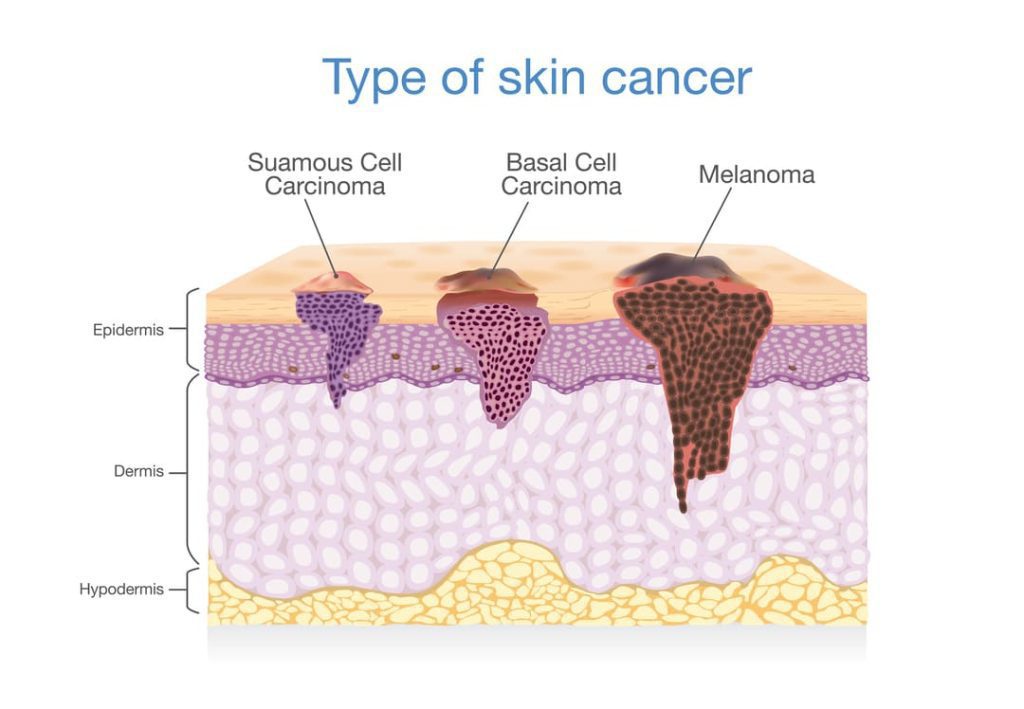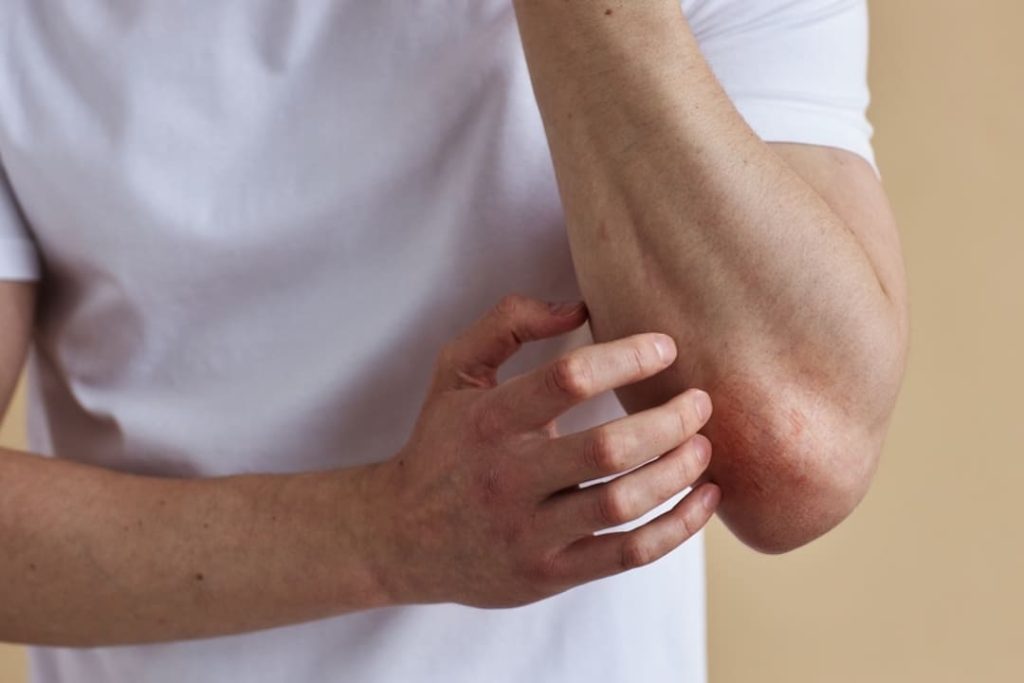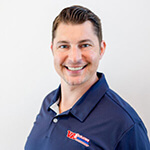Looking for Expert-Level VA Claim Answers?📱Call Us Now! 737-295-2226
Is there a VA disability rating for skin conditions? Yes!
The VA actually rates numerous skin conditions, awarding disability compensation to veterans with diagnosable disabilities that can be connected to their military service (service connection).
Skin conditions are among the many disabilities that can be caused or worsened by military service. If you have one, you should file a claim and pursue compensation!
There isn’t one VA rating for skin conditions, but a range of possible ratings depending upon the condition, severity, and treatment prescribed.
In this guide, we explain how a VA rating for skin conditions is awarded and what it takes to win your VA claim for a skin condition.
- VA Disability Rating for Skin Conditions
- How the VA Assigns Disability Ratings for Skin Conditions
- Commonly Rated Skin Conditions
- VA Rating for Eczema
- VA Rating for Dermatitis
- VA Rating for Psoriasis
- VA Disability Rating for Skin Cancer
- VA Disability Rating for Scars
- VA Presumptive Skin Conditions
- Presumptive Conditions & Your VA Claim
- Help with VA Claims for Skin Conditions
- NEED MORE ASSISTANCE?
- About the Author

You DESERVE a HIGHER VA rating.
Take advantage of a VA Claim Discovery Call with an experienced Team Member. Learn what you’ve been missing so you can FINALLY get the disability rating and compensation you’ve earned for your service.
VA Disability Rating for Skin Conditions
Getting a VA disability rating for skin conditions is not always a straightforward prospect. This is partly because skin conditions have so many different symptoms and causes that can sometimes be challenging to pinpoint.
Establishing a Direct or Presumptive Service Connection
One way to obtain a VA rating for skin conditions is via direct service connection—linking your condition to injuries or incidents that occurred during your time of service. This is the method that most veterans think of when they file a claim.
For direct service connection, you’ll need:
- a current diagnosis of your skin condition or lesion
- evidence of an incident in service that led to a skin condition or disfigurement
- medical evidence (a doctor’s opinion) connecting the current skin condition to the incident in service (this is also called a nexus letter)
Another avenue for veterans who want to pursue disability benefits for skin conditions is through presumptive service connection.
How the VA Assigns Disability Ratings for Skin Conditions
VA ratings for skin conditions are based on the amount of skin that’s affected. The rating schedule offers two ways to determine how much skin is affected: calculations and estimations.
Skin area calculations measure the affected surface area in inches squared. Skin area estimations instead account for the percentage of skin that is affected.
The VA rates skin conditions under 38 CFR § 4.118, Diagnostic Codes 7800-7833.
The General Rating Formula for the Skin assigns ratings to most skin conditions as follows:
- 60%—If one of these is true: lesions on over 40% of the body or exposed areas, or continuous use of treatments like steroids, light therapy, or other drugs for the last year.
- 30% — If any of these apply: lesions on 20-40% of the body or exposed areas, or using treatments like steroids, light therapy, or other drugs for a total of 6 weeks or more, but not consistently, in the last year.
- 10%—If any of these happen: lesions on at least 5% but less than 20% of the body or exposed areas, or occasional use of treatments like steroids, light therapy, or other drugs for less than six weeks in the past year.
- 0%—In the last year, only topical treatments were needed, and if lesions cover less than 5% of the whole body or exposed areas or rate as disfigurement of the head, face, or neck (DC 7800) or scars (DCs 7801, 7802, 7804, or 7805), depending on the main disability.
Commonly Rated Skin Conditions
Let’s take a look at the common skin disorders that are most likely to get you a VA disability rating for skin conditions (if you can prove service connection or the condition is on the presumptive list).
Some of the most common skin conditions affecting veterans are:
- Dermatitis or eczema: general skin irritation that can cause dry skin, rashes, swelling, blisters, and redness.
- Urticaria (hives): skin welts that may be itchy, swollen, and red. While hives are often seen as acute allergic reactions, they can also be considered chronic if they occur frequently or for periods over months or years.
- Acne and chloracne: inflamed nodules that can be red, swollen, and painful. Chloracne can present as a mix of blackheads, nodules, and cysts, and is commonly linked to toxin exposure, particularly to dioxins (which is why it’s on the Agent Orange presumptive list).
- Psoriasis: a skin disorder that causes inflammation and raised plaques, or scales, on the skin.
- Pseudo-folliculitis barbae: an inflammatory condition that affects the beard area in men.
- Autoimmune skin diseases: Autoimmune disease occurs because the body’s natural defenses — the immune system — attack the body’s own healthy tissue. There are many autoimmune skin diseases, and psoriasis and eczema are sometimes considered autoimmune diseases. Scleroderma is an autoimmune disease that involves the hardening and tightening of the skin.
- Skin Cancer: Skin cancer is the most common cancer. There are multiple forms of skin cancer: basal cell carcinoma, squamous cell carcinoma, and the more deadly melanoma.
VA Rating for Eczema
Eczema isn’t a single condition with uniform signs and symptoms. There are several types of eczema, but all are believed to stem from an overactive immune reaction and cause inflamed, irritated skin. A red, scaly rash can appear anywhere on the body, and sufferers often experience persistent itching. Any type of eczema may qualify you for an eczema VA rating.
Treatments such as prescription creams and ointments, light therapy, and oral medications aim to break the cycle of inflammation and itching.
When eczema is severe, the skin all over your body may be affected and itching is extreme and constant. Rashes may split, bleed, and ooze, creating entry points for infection. A doctor can assess your eczema’s severity based on how widespread, persistent, and intense your condition is.
A VA rating for eczema is based on these factors:
- The treatment prescribed
- The type of medications needed and in what doses and frequencies
- How much of the body is impacted—for example, if it’s a minimum of 5% of the body and medical treatment is required, the rating will be 10%. A 60% rating is merited if at least 40% of the body is affected or if your doctor has prescribed continuous medication for a year.

VA Rating for Dermatitis
The diagnostic code for eczema (7806) also includes dermatitis, a general term for skin irritation that can have many causes and usually involves itchy, dry skin and/or a rash.
“Razor bumps” are one form of skin irritation included in the VA rating for dermatitis.
This condition, medically called pseudofolliculitis barbae, is caused by trapped hairs beneath the surface of the skin in the head, neck, and face area. It results in rashes and bumps that can turn into pus-filled cysts. It’s sometimes a result of shaving but can have other causes, including toxic chemical exposures—common for Gulf War veterans.
On its own, Pseudofolliculitis barbae is rated as a 30% VA disability under diagnostic code 7806.
However, another cause can be scarring, which has separate diagnostic codes (7800 to 7805). The codes for scarring correspond to the physical locations of the scars, the nature of the scars, and whether there is underlying tissue damage.
VA Rating for Psoriasis
Psoriasis is a chronic skin condition in which skin cells grow too quickly. The cells build up and form thick scales and silvery or white patches. It can sometimes involve the nails or joints.
Like eczema, psoriasis is believed to stem from a malfunctioning immune system and can be triggered by illness or stress. Treatments range from topical ointments to immunosuppressive medication.
A VA rating for psoriasis is connected to diagnostic code 7816, which is specific to this condition. It’s evaluated under the general rating formula for the skin, but any related complications, such as psoriatic arthritis, are dealt with under separate diagnostic codes.

VA Disability Rating for Skin Cancer
A 2009-2010 study of 100 veterans exposed to Agent Orange and enrolled in the Agent Orange Registry at the Veterans Affairs Hospital in Washington, DC, found that 51% had a basal or squamous cell carcinoma but no increased risk for melanoma.
However, a significant relationship has been found between sun exposure during military service and skin cancers, including melanoma.
All skin cancers are rated in the same way as scars (diagnostic codes 7801-7805), disfigurement of the head, face, or neck (diagnostic code 7800), or impairment of body system function.
If systemic-type treatments like chemotherapy, radiotherapy, and surgery are required, a 100% rating is applied.
VA Compensation for Squamous Cell Carcinoma
You can develop Squamous Cell Carcinoma if you’re overexposed to ultraviolet (UV) radiation from the sun.
If you were overexposed to UV radiation during your service, you could qualify for a VA rating for Squamous Cell Carcinoma.
Squamous Cell Carcinoma falls under diagnostic code (DC) 7818. This DC is titled “Malignant skin neoplasms (other than malignant melanoma)” and covers several other skin conditions as well.
Because they produce similar symptoms, all conditions under DC 7818 are rated with the same criteria as DCs 7800-7805 (burn scars and other scars) or impairment of function.
Below are the Rating-Symptom tables for these diagnostic codes.
If your Squamous Cell Carcinoma causes any sort of scar or disfigurement described below and you can prove your service caused or made it worse, then you could be eligible for VA compensation for squamous cell carcinoma.
VA Disability Rating for Scars
You may qualify for service-connected disability compensation for scars from injuries or illnesses that occurred during your military service since scars are considered to be disfiguring.
The percentage rating is based on the location of the scar or scars and the corresponding size. Rating criteria for scars not on the head, face, or neck are generally based on size. Head, neck, and face scars are rated on skin loss and the number of facial features experiencing disfigurement.
If a veteran has a scar on his or her nose, a 10% rating is given because a relatively small area of the face is affected. Higher ratings are merited for more profound symptoms of service-related disability.
See also: How to Get a VA Rating for Scars
DC 7800: Scars or disfigurement on the head, face, or neck from burns, other causes, or other damage:
- 80%: With visible tissue loss and significant changes in three or more areas, such as the nose, chin, eyes, and ears, or with six or more signs of disfigurement
- 50%: With tissue loss and significant distortion in two facial areas or features or with four or five signs of disfigurement
- 30%: With tissue loss and major changes in one facial area or features or with two or three signs of disfigurement.
- 10%: With one sign of disfigurement.
DC 7801: Scars from burns or other causes, not on the head, face, or neck, linked to damage beneath the skin:
- 40%: An area of 144 square inches (929 sq. cm.) or more
- 30%: An area of at least 72 square inches (465 sq. cm.) but less than 144 square inches (929 sq. cm.)
- 20%: An area of at least 12 square inches (77 sq. cm.) but less than 72 square inches (465 sq. cm.)
- 10%: An area of at least 6 square inches (39 sq. cm.) but less than 12 square inches (77 sq. cm.)
DC 7802: Scars elsewhere without underlying tissue damage on the head, face, or neck from burns or other causes:
- 10%: An area larger than 144 square inches (929 sq. cm.)
DC 7804: Painful or unstable scars:
- 30%: Five or more scars that are unstable or painful.
- 20%: Three or four scars that are unstable or painful.
- 10%: One or two scars that are unstable or painful.
DC 7805: Scars and their effects under codes 7800, 7801, 7802, or 7804:
- Assess any disabling effects not covered in the rating given for codes 7800–04 using a more appropriate diagnostic code.

VA Disability Rating for Basal Cell Carcinoma
Basal Cell Carcinoma falls under diagnostic code 7819, which is titled “Benign skin neoplasms.” Just like DC 7818, DC 7819 covers a host of other conditions.
All conditions that fall under DC 7819 are rated according to the same criteria as above (DCs 7800-7805).
VA Disability for Melanoma
The same goes for Melanoma. While Melanoma falls under DC 7833, it is rated as scars (DC’s 7801, 7802, 7803, 7804, or 7805), disfigurement of the head, face, or neck (DC 7800), or impairment of function (under the appropriate body system).
VA Presumptive Skin Conditions
Some skin conditions are on VA presumptive lists. The VA presumes that certain conditions are caused by military service.
When there’s accumulated evidence of repeated associations between specific medical conditions and specific service environments, the VA presumes that these links are not coincidental and that the disability was caused by your service.
The presumptive list makes it easier for affected veterans to pursue their disability claims and receive benefits. While you still have to meet all the other requirements for service connection, presumptive service connection eliminates the onus to prove the nexus or link (that your disability was caused or made worse by your service).
Eligibility for Presumptive Service Connection Related to the Skin
- Veterans exposed to herbicides during Vietnam service. Vietnam veterans who experience chloracne or porphyria cutanea tarda within a year of exposure are granted presumptive service connection if the condition is rated at least 10% disabling.
- Gulf War veterans with chronic skin conditions (for example, eczema), or with chronic undiagnosed skin disorders. Such veterans qualify for presumptive service connection at any time with a condition rated at 10% or higher.
IMPORTANT NOTE: A presumptive service connection only satisfies the requirement of evidence of an in-service event, injury, disease, or aggravation. All other claim requirements still apply.
Also, to qualify for a presumptive service connection, your condition must also be considered chronic. The VA defines chronic conditions as those lasting for at least six months.
Presumptive Conditions & Your VA Claim
Watch our video below to learn more about how presumptive conditions affect your VA claim.
Help with VA Claims for Skin Conditions
If you suffer from skin conditions related to your active-duty service, you deserve (and are owed) compensation for your disabilities.
Because these VA claims for skin conditions can be tricky due to overlapping symptoms and the difficulty of proving causation, we recommend you get support in building your claim.
We’ve helped thousands of veterans get a VA disability rating for skin conditions. Learn more with a FREE VA Claim Discovery Call.

NEED MORE ASSISTANCE?
Most veterans are underrated for their disabilities and therefore not getting the compensation they’re due. At VA Claims Insider, we help you understand and take control of the claims process, so you can get the rating and compensation you’re owed by law.
Our process takes the guesswork out of filing a VA disability claim and supports you every step of the way in building a fully developed claim (FDC)—so you can increase your rating fast!
If you’ve filed your VA disability claim and have been denied or have received a low rating—or you’re unsure how to get started—reach out to us! Take advantage of a FREE VA Claim Discovery Call. Learn what you’ve been missing—so you can FINALLY get the disability rating and compensation you deserve!
We’ve supported more than 25,000 veterans to win their VA claims and increase their VA ratings. NOW IT’S YOUR TURN.
About the Author

About VA Claims Insider
VA Claims Insider is an education-based coaching/consulting company. We’re here for disabled veterans exploring eligibility for increased VA disability benefits and who wish to learn more about that process. We also connect veterans with independent medical professionals in our referral network for medical examinations, disability evaluations, and credible independent medical opinions and nexus statements (medical nexus letters) for a wide range of disability conditions.




